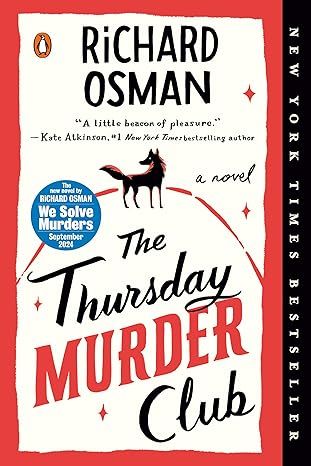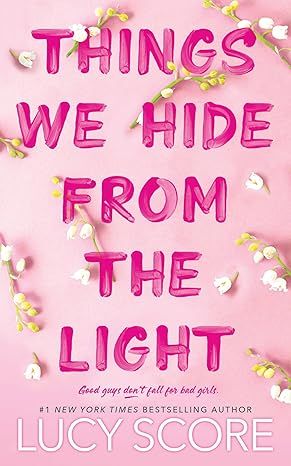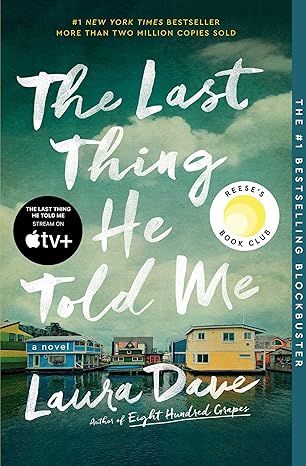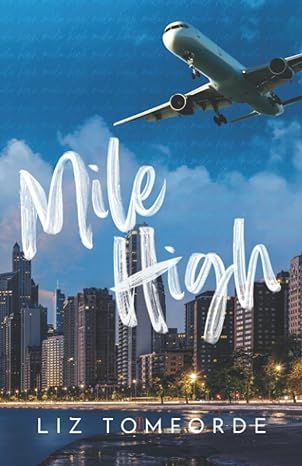Color and Light: A Guide for the Realist Painter (Volume 2) (James Gurney Art)
4.8
-
4,881 ratings
From New York Times best-selling author of the Dinotopia series, James Gurney, comes a carefully crafted and researched study on color and light in paintings. This art instruction book is the follow up to the acclaimed Imaginative Realism: How to Paint What Doesn't Exist.
James Gurney, New York Times best-selling author and artist of the Dinotopia series, follows Imaginative Realism with his second art-instruction book, Color and Light: A Guide for the Realist Painter. A researched study on two of art's most fundamental themes, Color and Light bridges the gap between abstract theory and practical knowledge. Beginning with a survey of underappreciated masters who perfected the use of color and light, the book examines how light reveals form, the properties of color and pigments, and the wide variety of atmospheric effects. Gurney cuts though the confusing and contradictory dogma about color, testing it in the light of science and observation. A glossary, pigment index, and bibliography complete what will ultimately become an indispensible tool for any artist.
"James Gurney's new book, Color and Light, cleverly bridges the gap between artistic observation and scientific explanation. Not only does he eloquently describe all the effects of color and light an artist might encounter, but he thrills us with his striking paintings in the process." --Armand Cabrera, Artist
Paperback
$17.25
Spiral-bound
$31.99
Ships from
Amazon.com
Payment
Secure transaction
ISBN-10
0740797719
ISBN-13
978-0740797712
Print length
224 pages
Language
English
Publisher
Andrews McMeel Publishing
Publication date
November 29, 2010
Dimensions
9 x 0.6 x 10.5 inches
Item weight
2.31 pounds
Editorial reviews
James Gurney's series of illustrated fantasy adventure stories, beginning with 1992's Dinotopia: A Land Apart from Time, produced a generation raised on Gurney's highly realistic paintings of an entirely unreal subject.... Still it was no surprise to the author-artist-blogger and his long-time publisher Andrews McMeel when his recently released second volume of art instruction, Color and Light: A Guide for the Realist Painter, became a bestseller for AMP immediately upon its release in December 2010, selling out its 10,000-copy run in just two months. (Mark Schulz, Publishers Weekly)
Dinotopia author and plein-air painter Gurney offers a practical, well-organized, and informative handbook for artists of all levels. (Chronogram Magazine)
This is a terrific book, highly recommended not only for young artists but anyone with an interest in traditional art technique. (Karen Haber, Locus)
About the authors
James Gurney
James Gurney is the author and illustrator of the New York Times bestselling Dinotopia book series. He designed the World of Dinosaurs stamps for the U.S. Postal Service and has worked on over a dozen assignments for National Geographic magazine, painting reconstructions of Moche, Kushite, and Etruscan civilizations. He has won the Hugo, Chesley, Spectrum, and World Fantasy Awards. Solo exhibitions of his artwork have been presented at the Smithsonian Institution, the Norman Rockwell Museum, and currently at the Lyman Allyn Museum of Art. He has recently been named a "Grand Master" by Spectrum Fantastic Arts and a "Living Master" by the Art Renewal Center. His most recent book, Color and Light: A Guide for the Realist Painter, was Amazon's #1 bestselling book on painting for over 100 weeks and is based on his daily blog gurneyjourney.blogspot.com. For more information, visit www.dinotopia.com or www.jamesgurney.com.
Read more
Reviews
Customer reviews
4.8 out of 5
4,881 global ratings
MizNovember
5
My Favorite Art Book
Reviewed in the United States on May 1, 2024
Verified Purchase
I have bought quite a few art related books over the years and this one is honestly the most useful in my entire collection. I think every artist should have this book. I think this should be given out as textbooks to art students. It's just so dang useful! It is written in a very approachable manner and broken down into two-page spreads for each subject. There is no pretentious lecturing or pontificating like some art books. Just really useful information laid out in an easy to reference guidebook. GET IT!
Read more
3 people found this helpful

Miriam Sanchez
5
Seeing Things in a New Way
Reviewed in the United States on May 24, 2011
Verified Purchase
I love this book! I've recommended it all my artistic friends. As a self-taught artist, I tend to collect a lot of art books, and this one has to be the best one I've received! It's incredible how easily I'm able to follow it. There's few technical terms, and their meanings are readily apparent. There's also no complicated formulas or theories that turn the two subjects, color and light, into an intellectual ramble. Every time I cover something new, I get giddy over how I understand it! However, this isn't a how-to book. There's no step-by-steps, or such. This isn't going to teach you how to paint. Rather, it'll teach you how to look at colors and lighting in such a way that you'll see things different, a new way that allows you to observe them properly. As with all learning books, you get as much as you put in. For example: On page 28 you are told, "On a clear day...the shadows are darker and bluer relative to the sun. As more clouds appear in the sky, shadows become grayer." Then, "The blue sky color gives the top of the shoulder a greenish quality in the shadow. Where the sleeve drops from the shoulder, the yellow shirt picks up warm colors from the ground and appears more orange." Going with the past section of how sunny days have blue shadows, it's like, 'Oh, that makes sense!' Then my mind immediately jumps to, 'Well, if the shadows are greenish on a yellow shirt, they'd be more violet on a red shirt, and possibly more lilac on a cloudy day.' I highly recommend Colors and Light, and it's so affordable, too! There's also a second book by this author,
Read more
4 people found this helpful

artniti
5
Best Book I have ever read
Reviewed in the United States on December 19, 2011
Verified Purchase
This book did not disappoint, in fact it is one of the best books I have ever read so far. Art is a subjective process where you rely more on a hunch and instinct to get things looking good. To find an artist who is conscious enough to explain all the workings of color and light is not easy since it is like putting a formula to emotions.
Chapter 1 Tradition In the first chapter, the author wastes no time and delved right into how the great masters did it in their time with the limited pigments and how they made up for the limitations with skill.
Chapter 2 Sources of Light In the second chapter, the quick basics of light is briefly explored from direct sunlight to window light. In the later part of the chapter, James Gurney gives accurate descriptions on rare occasions where there is a hidden light source or light sources that emits from objects.
Chapter 3 Light and Form The third chapter covers all the lighting from each direction and all the various types of shadows.
Chapter 4 Elements of Color This is where it gets interesting. There are some articles and books on Color that are either too technical or too brief. In this chapter, we are introduced to the basics of color and there is a sub-page on the history of color wheels that is very enlightening. You must be thinking, "Color Wheels again.." but I can assure you that most of your questions about how the wheel came to be and other variations of the wheel is all covered here.
Chapter 5 Paint and Pigments After the introduction to color, we get right into traditional paint and pigments. Here, the techniques for color mixing and pallete arrangements are introduced. You can't help but feel that the author is being very generous with his knowledge really. He also briefly covered a warm underpainting in this chapter.
Chapter 6 Color Relationships The 6th chapter is a prelude to the coming chapter. It is basically a demonstration that color information changes depending on the adjacent colors that is placed next to that color. It is all about color relationships and how the warm and cool colors differs from each pallete.
Chapter 7 Premixing The core of the book lies in Chapter 7. It covers the all important color picking or in the traditional sense, premixing. It teaches the reader how to restrict their color pallete in order to create more harmony in a painting.
Chapter 7 Premixing In this chapter, gamut mapping and masks is covered with examples of how it would look like in an actual painting.
Chapter 8 Visual Perception Next, there are some exceptions when it comes to all the rules of colors and here it is covered in the Visual Perception chapter. Tricky situations like moonlight color and color constancy is covered in depth.
Chapter 9 Surfaces and Effects The final chapters are filled with techniques to render all other forms of effects like scattering, hair, caustics, motion blur and highlights.
Chapter 10 Atmospheric Effects Finally, the rest of the book covers all the atmospheric effects of sunlight and certain materials like snow, water, rivers and underwater. If you are expecting to be spoon fed with palletes and sure fire methods of handling color then you are mistaken. However, after going through this book, you will be armed with an understanding of color like never before
..more at [...]
Read more
51 people found this helpful
Best sellers
View all
The Tuscan Child
4.2
-
100,022
$8.39

The Thursday Murder Club: A Novel (A Thursday Murder Club Mystery)
4.3
-
155,575
$6.33

Sapiens: A Brief History of Humankind
4.6
-
140,302
$13.49

The Butterfly Garden (The Collector, 1)
4.3
-
88,556
$9.59

Things We Hide from the Light (Knockemout Series, 2)
4.4
-
94,890
$11.66

The Last Thing He Told Me: A Novel
4.3
-
154,085
$2.99

The Perfect Marriage: A Completely Gripping Psychological Suspense
4.3
-
143,196
$9.47

The Coworker
4.1
-
80,003
$13.48

First Lie Wins: A Novel (Random House Large Print)
4.3
-
54,062
$14.99

Mile High (Windy City Series Book 1)
4.4
-
59,745
$16.19

Layla
4.2
-
107,613
$8.99

The Locked Door
4.4
-
94,673
$8.53

